Structural model of microtubule dynamics inhibition by kinesin-4 from the crystal structure of KLP-12 -tubulin complex
- PMID: 36065637
- PMCID: PMC9451533
- DOI: 10.7554/eLife.77877
Structural model of microtubule dynamics inhibition by kinesin-4 from the crystal structure of KLP-12 -tubulin complex
Abstract
Kinesin superfamily proteins are microtubule-based molecular motors driven by the energy of ATP hydrolysis. Among them, the kinesin-4 family is a unique motor that inhibits microtubule dynamics. Although mutations of kinesin-4 cause several diseases, its molecular mechanism is unclear because of the difficulty of visualizing the high-resolution structure of kinesin-4 working at the microtubule plus-end. Here, we report that KLP-12, a C. elegans kinesin-4 ortholog of KIF21A and KIF21B, is essential for proper length control of C. elegans axons, and its motor domain represses microtubule polymerization in vitro. The crystal structure of the KLP-12 motor domain complexed with tubulin, which represents the high-resolution structural snapshot of the inhibition state of microtubule-end dynamics, revealed the bending effect of KLP-12 for tubulin. Comparison with the KIF5B-tubulin and KIF2C-tubulin complexes, which represent the elongation and shrinking forms of microtubule ends, respectively, showed the curvature of tubulin introduced by KLP-12 is in between them. Taken together, KLP-12 controls the proper length of axons by modulating the curvature of the microtubule ends to inhibit the microtubule dynamics.
Keywords: C. elegans; KIF21A; KIF21B; KLP-12; kinesin-4; microtubule; molecular biophysics; neuroscience; structural biology; tubulin.
Plain language summary
From meter-long structures that allow nerve cells to stretch across a body to miniscule ‘hairs’ required for lung cells to clear mucus, many life processes rely on cells sporting projections which have the right size for their role. Networks of hollow filaments known as microtubules shape these structures and ensure that they have the appropriate dimensions. Controlling the length of microtubules is therefore essential for organisms, yet how this process takes place is still not fully elucidated. Previous research has shown that microtubules continue to grow when their end is straight but stop when it is curved. A family of molecular motors known as kinesin-4 participate in this process, but the exact mechanisms at play remain unclear. To investigate, Tuguchi, Nakano, Imasaki et al. focused on the KLP-12 protein, a kinesin-4 equivalent which helps to controls the length of microtubules in the tiny worm Caenorhabditis elegans. They performed genetic manipulations and imaged the interactions between KLP-12 and the growing end of a microtubule using X-ray crystallography. This revealed that KLP-12 controls the length of neurons by inhibiting microtubule growth. It does so by modulating the curvature of the growing end of the filament to suppress its extension. A ‘snapshot’ of KLP-12 binding to a microtubule at the resolution of the atom revealed exactly how the protein helps to bend the end of the filament to prevent it from growing further. These results will help to understand how nerve cells are shaped. This may also provide insights into the molecular mechanisms for various neurodegenerative disorders caused by problems with the human equivalents of KLP-12, potentially leading to new therapies.
© 2022, Taguchi, Nakano, Imasaki et al.
Conflict of interest statement
ST, JN, TI, TK, YS, NS, HS, HO, TS, EN, SK, SM, SN, RN No competing interests declared
Figures
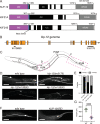


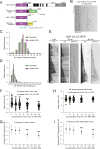







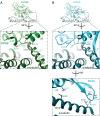
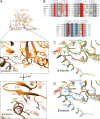
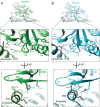


Similar articles
-
Essential kinesins: characterization of Caenorhabditis elegans KLP-15.Biochemistry. 2005 May 3;44(17):6526-36. doi: 10.1021/bi048157h. Biochemistry. 2005. PMID: 15850386
-
New Insights into the Coupling between Microtubule Depolymerization and ATP Hydrolysis by Kinesin-13 Protein Kif2C.J Biol Chem. 2015 Jul 24;290(30):18721-31. doi: 10.1074/jbc.M115.646919. Epub 2015 Jun 8. J Biol Chem. 2015. PMID: 26055718 Free PMC article.
-
KLP-7/Kinesin-13 orchestrates axon-dendrite checkpoints for polarized trafficking in neurons.Mol Biol Cell. 2024 Sep 1;35(9):ar115. doi: 10.1091/mbc.E23-08-0335. Epub 2024 Jul 10. Mol Biol Cell. 2024. PMID: 38985513 Free PMC article.
-
New insights into the mechanochemical coupling mechanism of kinesin-microtubule complexes from their high-resolution structures.Biochem Soc Trans. 2023 Aug 31;51(4):1505-1520. doi: 10.1042/BST20221238. Biochem Soc Trans. 2023. PMID: 37560910 Free PMC article. Review.
-
Interaction of kinesin motors, microtubules, and MAPs.J Muscle Res Cell Motil. 2006;27(2):125-37. doi: 10.1007/s10974-005-9051-4. Epub 2005 Dec 17. J Muscle Res Cell Motil. 2006. PMID: 16362723 Review.
Cited by
-
Kif21a deficiency leads to impaired glomerular filtration barrier function.Sci Rep. 2023 Nov 6;13(1):19161. doi: 10.1038/s41598-023-46270-1. Sci Rep. 2023. PMID: 37932480 Free PMC article.
-
The interaction between KIF21A and KANK1 regulates dendritic morphology and synapse plasticity in neurons.Neural Regen Res. 2025 Jan 1;20(1):209-223. doi: 10.4103/1673-5374.391301. Epub 2023 Dec 21. Neural Regen Res. 2025. PMID: 38767486 Free PMC article.
-
Dimerization of GAS2 mediates crosslinking of microtubules and F-actin.EMBO J. 2025 May;44(10):2997-3024. doi: 10.1038/s44318-025-00415-2. Epub 2025 Apr 1. EMBO J. 2025. PMID: 40169809 Free PMC article.
-
TUBB3 and KIF21A in neurodevelopment and disease.Front Neurosci. 2023 Aug 4;17:1226181. doi: 10.3389/fnins.2023.1226181. eCollection 2023. Front Neurosci. 2023. PMID: 37600020 Free PMC article. Review.
-
KIF22 regulates mitosis and proliferation of chondrocyte cells.iScience. 2024 May 31;27(7):110151. doi: 10.1016/j.isci.2024.110151. eCollection 2024 Jul 19. iScience. 2024. PMID: 38989461 Free PMC article.
References
-
- Barrett JC, Hansoul S, Nicolae DL, Cho JH, Duerr RH, Rioux JD, Brant SR, Silverberg MS, Taylor KD, Barmada MM, Bitton A, Dassopoulos T, Datta LW, Green T, Griffiths AM, Kistner EO, Murtha MT, Regueiro MD, Rotter JI, Schumm LP, Steinhart AH, Targan SR, Xavier RJ, Libioulle C, Sandor C, Lathrop M, Belaiche J, Dewit O, Gut I, Heath S, Laukens D, Mni M, Rutgeerts P, Van Gossum A, Zelenika D, Franchimont D, Hugot J-P, de Vos M, Vermeire S, Louis E, Cardon LR, Anderson CA, Drummond H, Nimmo E, Ahmad T, Prescott NJ, Onnie CM, Fisher SA, Marchini J, Ghori J, Bumpstead S, Gwilliam R, Tremelling M, Deloukas P, Mansfield J, Jewell D, Satsangi J, Mathew CG, Parkes M, Georges M, Daly MJ, NIDDK IBD Genetics Consortium. Belgian-French IBD Consortium. Wellcome Trust Case Control Consortium Genome-wide association defines more than 30 distinct susceptibility loci for Crohn’s disease. Nature Genetics. 2008;40:955–962. doi: 10.1038/ng.175. - DOI - PMC - PubMed
-
- Bianchi S, van Riel WE, Kraatz SHW, Olieric N, Frey D, Katrukha EA, Jaussi R, Missimer J, Grigoriev I, Olieric V, Benoit RM, Steinmetz MO, Akhmanova A, Kammerer RA. Structural basis for misregulation of kinesin KIF21A autoinhibition by CFEOM1 disease mutations. Scientific Reports. 2016;6:30668. doi: 10.1038/srep30668. - DOI - PMC - PubMed
Publication types
MeSH terms
Substances
LinkOut - more resources
Full Text Sources
Research Materials
Miscellaneous

